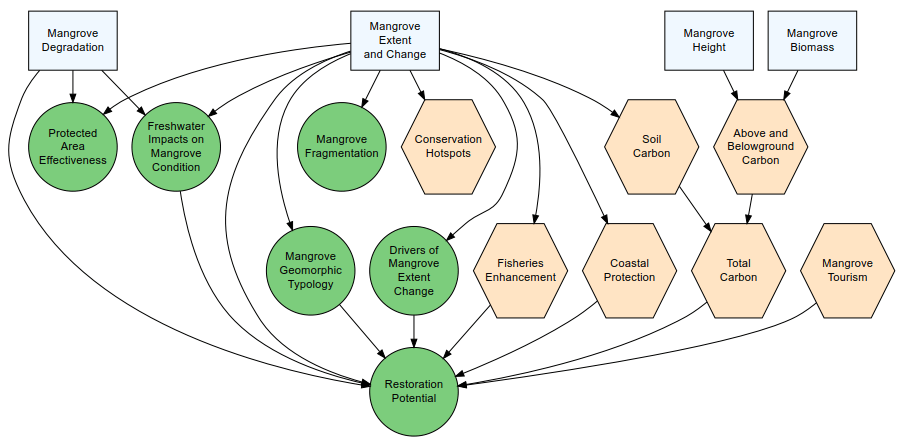Unpacking the problem of big mangrove data
A new overarching perspective brings together scientists to solve a mangrove conservation problem —too many datasets, each interrelated but designed for different purposes.
Mangroves support many unique species and provide a wide range of benefits for coastal communities, such as protection from extreme weather and a source of sustainable resources. They also store large volumes of carbon—helping to reduce the impact of climate change. Utilizing satellite data helps both scientists and conservationists understand these benefits. While mangrove data has significantly improved over the last 40 years because of increased access to satellite imagery and computing power, the abundance of data—each with different constraints—can become overwhelming. A lack of consistency among datasets also makes it difficult to see big picture trends and find areas that need management attention.
A new paper — “Harnessing Big Data to Support the Conservation and Rehabilitation of Mangrove Forests Globally” — has just published in the journal One Earth and addresses this mangrove data challenge. The paper, led by Dr. Tom Worthington of the University of Cambridge, in collaboration with Global Mangrove Alliance members and other mangrove researchers, holds a wealth of information to guide scientists and conservationists through all available global mangrove data.

Figure 1. A Roadmap of the Interconnectedness between Global Mangrove Datasets.
Pale-blue rectangles, baseline products; green circles, secondary datasets; beige hexagons, analyses of ecosystem services and biodiversity. Arrows represent the integration of products into new datasets rather than casual links between data.
The paper gives an overview of existing and upcoming datasets, the challenges of using this data for on-the-ground management — including informing the future of mangrove conservation — and provides an introduction to a new data platform that is expected to greatly improve data access and ease of use: the Global Mangrove Watch, launching on our Knowledge Hub later this year.
By improving ease of access to mangrove data, this paper aims to help at all scales of mangrove conservation. Local NGOs can look for hotspots of degradation or restoration potential, as can global organizations who work on policy improvements and advocate to governments for the protection of mangroves under sustainable development goals.
The full paper is published in the journal One Earth and is available with open access here.